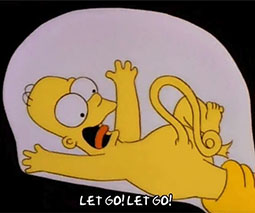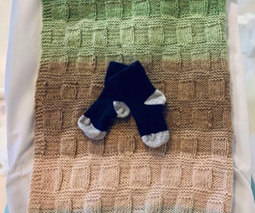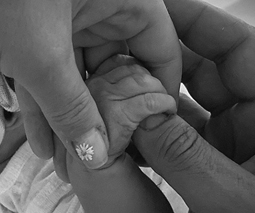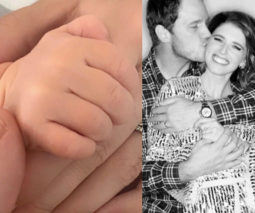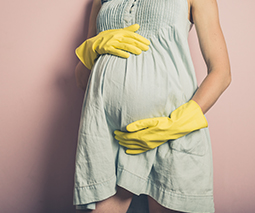4 ways my daughter’s vaginal birth was not natural

At 9pm, on a Sunday night, my partner drove me to hospital for my scheduled induction. Within 24 hours, we would have a beautiful, baby girl.
While I gave birth to her vaginally, it baffles me that ‘natural’ is sometimes used to describe her birth.
Here are four ways that her vaginal birth was far from natural.
1. I was induced
I was 37 years old and considered ‘advanced’ in maternal age. My obstetrician recommended induction at 39 weeks gestation. The week prior (at 38 weeks), he tried a ‘stretch and sweep’ which could sometimes bring on labour. The procedure, two gloved fingers up the vagina to stretch the cervix, was as lovely as it sounded and didn’t work.
I returned to hospital at 39 weeks. A synthetic, gel form version of prostaglandin (a hormone that prepares the body for labour) was inserted into my vagina. Nothing was expected to happen for a few hours, so my partner went home while the nurses gave me sleeping pills. I asked the midwife if I would sleep through birth. The answer was a firm no.
At 7am the next morning, my obstetrician came back to manually break my waters, using a shiny, hook-like instrument. A bit of the baby’s hair came out with it. I was then hooked up to a drip for low doses of Syntocinon, a synthetic form of oxytocin (a hormone which causes contractions).
Half an hour later, my contractions started.
2. I had gas and then an epidural
At first, the contractions were manageable, and I even watched a bit of Netflix. But before the comedy special was over, I needed something more. In comes medical pain relief.
I started with nitrous oxide (happy gas) which kept me going for a good five hours. By 1pm, I had reached my pain threshold, and I was only 3cm dilated.
I requested (begged for) an epidural which worked a little too well. Instead of being numb from the waist down, I was numb from my breasts down; which felt so unnatural. I kept asking if the contractions were still happening. The answer was a firm yes.

I laboured for four more hours pain-free, but not drama-free. I suffered the side effects of the drug. I was shivering uncontrollably; I felt cold, yet my temperature was soaring. I demanded more blankets only to be told that I wasn’t actually cold and that everything I was feeling was ‘normal’.
I felt far from normal.
When my obstetrician returned at 6pm, I was 9cm dilated. He gave me one more hour to get that last centimetre opened.
3. I needed forceps
At 7pm, I was at last, fully dilated. But the shivers, fever and, now elevated, blood pressure meant I had no confidence in my ability to push. I was distressed, causing my baby distress too.
My birth plan was to have a go vaginally as long as it was possible and safe and to proceed with a caesarean if and when it was required.
My obstetrician was confident that the baby could be delivered safely with forceps, a delivery instrument shaped like salad tongs.
As per the plan, my OB announced we would try a forceps delivery.
4. I had an episiotomy
As my baby’s head was considered high, my obstetrician made a deliberate cut in the perineum (the tissue between the vagina and the anus), so he could control any tearing.
Finally, I was able to push. After maybe three pushes, my daughter came out, yelping and covered in blood and white goo. I felt nauseous, dizzy and completely out of it and I lay there waiting to be stitched back up.
Far from natural
Two synthetic hormones, medical pain relief, delivery instruments and a surgical cut were required to deliver my healthy baby girl.
When I am asked if I had a natural or caesarean birth, I say neither. I had a vaginal birth, but it was far from natural.



